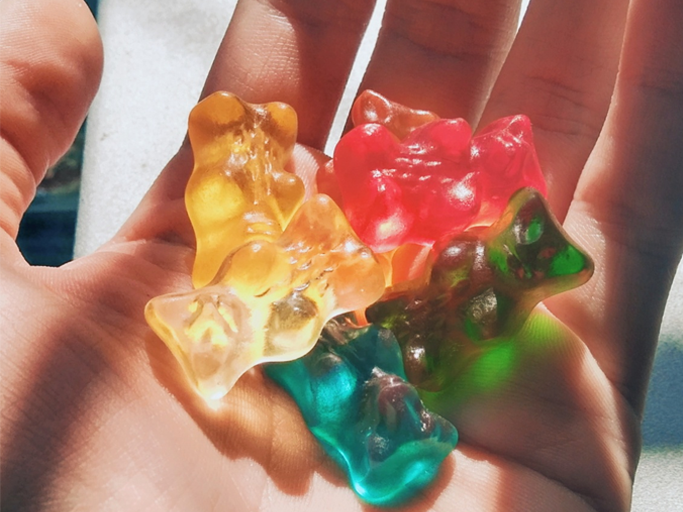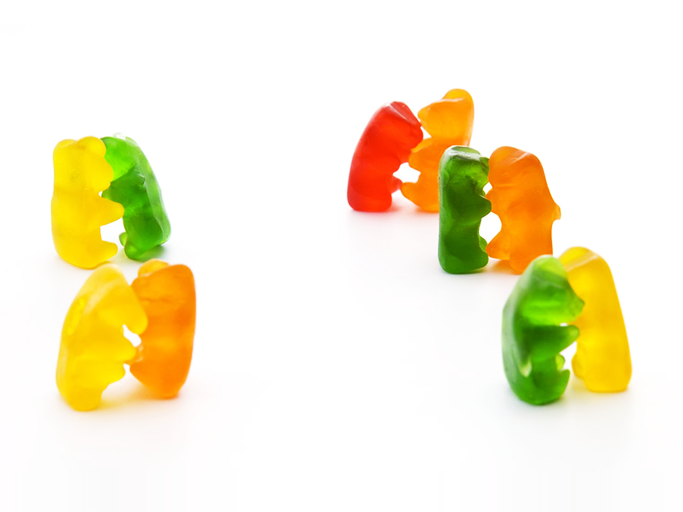One of the most annoying operational issues in manufacturing is gummies staying together. They frequently can’t be split apart without causing harm to the individual product units.
Gummies are tasty, salty, and easy to snack on. They come in every flavor imaginable and we can’t seem to get enough of them. You might have a big bag of gummies sitting in your pantry at home, or you might pick up a bag at the grocery store now and then.
Gummies that become stuck can cause a loss of momentum in addition to a loss of goods and income. However, this problem may be resolved with a few changes, allowing you to move forward with your production processes.
One of the most frustrating things about making gummies is that they stick together. You can’t eat them when they’re all stuck together, and you have to throw them away. This is a waste of time and money, but it’s not your fault—gummy bears are just designed to do this! Luckily, there are ways to prevent them from sticking together in the future.

Formulation
The formulation is the primary potential factor in gummies sticking together. One of the most frequent causes of gummies’ stickiness, and one that is challenging to avoid. It’s crucial to be aware of your components and how they interact with one another because some additives can make gummies cling together.
Use a different kind of gelatin if you’re creating a recipe that calls for it. Gelatin is occasionally derived from animal products, which increases the likelihood that your gummy candy will cling together. Furthermore, some recipes include corn syrup or other thickeners, which could worsen the issue.
Another thing is Glucose syrup and other sweeteners might make your gummies sticky if you add too much of them when you’re cooking the food. The leftover sweetener can get stickier as the gummies dry, bonding together individual units before they are ready to be packaged.
By changing the proportion of sugar or glucose to the other ingredients in your mix, you can fix the problem if the sweeteners are at fault. Rechecking the temperature settings for your preheating kettle or storage tank can also be necessary.
Furthermore, non-gelatin alternatives for the gummy’s foundation might produce a stickier consistency. Common alternatives like pectin might have different melting points, in which case you would need to modify the heated machinery as necessary.
High Water Activity
You might notice that your gummies are sticking to one another as you make them. This is due to the high quantity of water activity in your candy concoction. The sugar in your candy may crystallize due to high water activity levels, giving it a sticky texture. This indicates that not enough sugar is present in your recipe to stabilize all of the water molecules and prevent them from forming covalent bonds, as they would in a solution of sugar alone.
An immediate effect of water activity is seen in the final properties of a gummy product. The gummies will have a wetter consistency and a more slippery texture if the water activity is too high. This could result in their adhering to one another once they are placed in their container.
Use an aW meter to gauge the levels in the gummies during quality control. This handheld instrument can deliver an accurate read in a few minutes and is conveniently portable. Any problems with water activity can be quickly found and fixed before the batch as a whole is jeopardized.

Issues With Storage And Packaging
Gummy items that have been packaged need to be kept in a cold, dry location free of outside moisture. The gummies in the container may soften and stay together over time if the environment is very hot or humid.
This can occasionally be fixed, and the package can be resealed. However, some chemicals can become too unstable to save.
The package itself could exacerbate stickiness problems when combined with where and how the gummies are stored. Inadequate sealing could lead to moisture seeping into the container, softening the inside units, and making them stick.
Stickiness may also be promoted by softer packaging materials like bags and boxes. For instance, stacking boxes of units on top of one another may create too much weight, which will put extra strain on the units at the bottom. The gummies lower down may become compressed as a result.
Tips For Avoiding Gummy Candy Stick Together
Know Your Melting And Freezing Points
The temperature at which a solid transforms into a liquid is referred to as the melting point. The temperature at which a liquid turns into a solid is known as the freezing point.
It’s crucial to be aware that one of the ingredients in gummy candy is gelatin, which implies that your gummy will have a relatively high melting point. If you don’t move quickly, your gummies will start to melt before you’ve finished shaping them, and when that happens, they’ll cling together.
On the other hand, if you don’t freeze your gummy quickly enough after shaping it, it can melt when exposed to room temperature air—and once more stay together when it does. Keep in mind that this can happen even if your freezer isn’t particularly cold.
The final characteristics of your gummies will depend on the ingredients melting and freezing values. A stickier consistency that raises the possibility of product loss could emerge if they are not adequately accounted for throughout production.
Ask the provider about their melting points if you intend to make your gummies with unconventional or alternative ingredients. This will provide you with a solid base from which to start producing your gummies with less risk of sticking together and more assurance.
Adding A Coating
Make sure to put an additional layer of coating on top of the first one if you’re producing your gummy bears. When they are kept in the freezer or refrigerator, this will prevent them from sticking to one another. The extra coating will help prevent moisture from getting trapped inside and causing them to stick together over time if you’re storing them in airtight containers like Tupperware containers or Mason jars.
A sticky coating can increase the friction between separate units and prevent them from adhering to one another. A powder coating made of tapioca starch will produce a surface that is dryer and can assist protect against possible exposure to ambient moisture while being stored.
Store Gummies In Environmentally Controlled Spaces
Gummies are vulnerable to high temperatures, just like many other candy items. Gummies can become sticky or dry and lose their flavor if you store them in an environment that is too hot or too cold.
Gummies should be kept in an atmosphere that is not too hot or too cold.
Gummies should be kept in a cold, dry, and temperature-controlled location to protect them from environmental hazards like heat and humidity. Additional benefits of controlling humidity include fewer possibilities of food spoiling and increased consumer confidence.
If your firm employs courier services to deliver its goods, look for a shipping provider that utilizes climate-controlled transportation vans. Thanks to their temperature-controlled chamber, your gummies are kept cool and safe as they travel from your facility to store locations.
Use A professional-Grade Gummy-Making Equipment
A quality completed product that you can confidently deliver is the outcome of your production processes using high-performance gummy manufacturing equipment.
A piece of professional-grade gummy-making equipment is a must for the best results. The quality of the ingredients and the equipment used will significantly affect the final product. If you want to make gummies at home, it is important to use high-quality ingredients such as gelatin, fruit juice, and fruit extract.
It’s important to use professional-grade gummy-making equipment when you’re making gummies. This is because the quality of your gummy bears will depend on the quality of your equipment. If you use a high-quality machine, then it is more likely that your gummies will come out soft and chewy.
The best way to make sure that your machine is high-quality is by reading reviews online before purchasing it. You should also ask around if any other people have used this type of machine before and what their experience was like with it.
 One-Stop Solution Manufacturer of Gummy Making Machine
One-Stop Solution Manufacturer of Gummy Making Machine